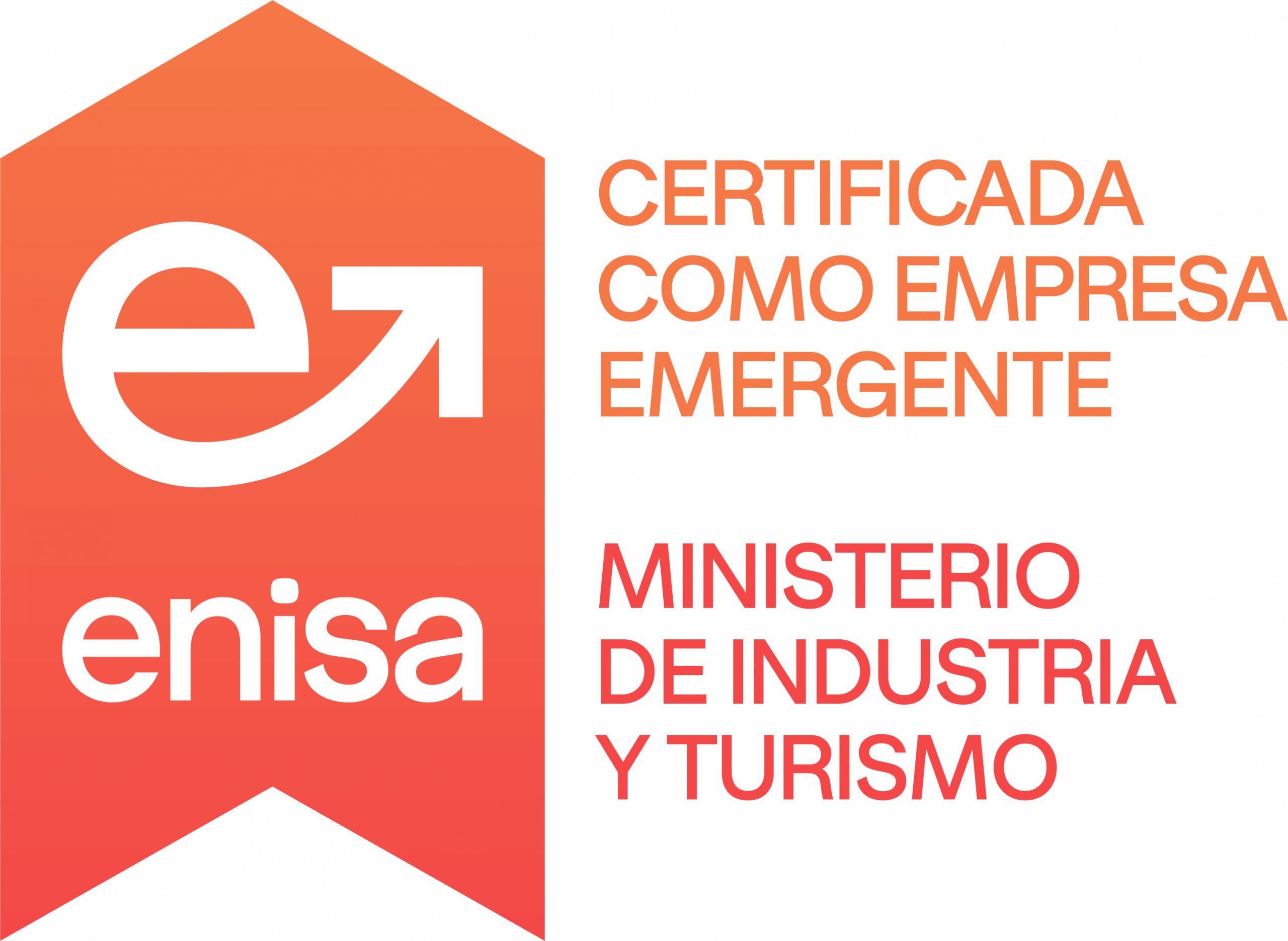Email marketing has endured as one of the most effective strategies for connecting with the online audience.
However, in a world saturated with inboxes full of promotional messages, standing out and forging genuine connections with your contacts is essential.
In this regard, one of the most powerful tools you can employ to achieve this is the tone of your newsletters. el tono de tus newsletters.
More than the content you share, it's about how you share it and how you make your readers feel when they receive it.

Introduction to the Importance of Tone in a Newsletter
The tone, in the context of a newsletter, refers to the voice, style, and attitude with which you communicate with your audience.
It can be friendly and approachable, professional and serious, humorous, or any other nuance you choose to convey your message.
The choice of the right tone not only impacts how your message is perceived but also can influence how your contacts interact with your content and, ultimately, how they relate to your brand.
Email marketing remains one of the most effective strategies to keep your audience informed, engaged, and, ultimately, turn them into loyal customers..
However, success in the world of email goes beyond merely sending messages.
It's about creating an experience that resonates with your contacts and makes them feel like they are connecting with a brand that understands and values them.
When it comes to newsletters, differentiation is even more crucial.
Why should someone pay attention to your newsletter instead of simply deleting or archiving it along with others?
The tone you use in your newsletter can be your secret weapon to stand out and capture the attention of your subscribers.
Differentiation from other brands: Creating a personal and emotional connection
The tone of your newsletter is an integral part of your brand's identity.
Whenever a subscriber opens your email, they should immediately recognize that it comes from your brand.
If you maintain a consistent and unique tone, you will be building a strong and memorable identity.
Doing so will also allow you to:
- Connect emotionally
An authentic and appropriate tone can help establish emotional connections with your subscribers. When your readers feel they are interacting with a brand that understands them and shares their values, they are more likely to engage and become loyal customers. - Convey values and culture
Your tone can reflect the values and culture of your brand. If you are a sustainability-focused company, your tone can be informative and passionate about environmental issues. If your brand is known for its humor, the tone can be light and entertaining. - Stand out in the inbox
A unique and engaging tone can help your newsletter stand out in your subscribers' crowded inboxes. When your emails feel fresh and different, they are more likely to be opened and read instead of ignored.
To better understand how tone can make a difference, consider the following examples:
- Brand A: Uses a formal and serious tone in its newsletters, reflecting its professional approach to financial services.
- Brand B: Adopts a friendly and approachable tone, using humor to connect with subscribers in the comedy niche.
- Brand C: Opts for an inspiring and passionate tone, sharing success and overcoming stories in its motivation newsletter.
Each of these brands differentiates itself from others through its choice of tone.
This differentiation not only attracts a specific audience but also creates a solid identity associated with the brand over time.
That's why choosing the right tone in your newsletter is crucial for standing out in a saturated message environment.
By creating that unique identity, emotionally connecting with your contacts, and conveying your values and culture, you can differentiate yourself and build strong relationships with your audience.
Moreover, the tone of your newsletter will help you generate trust and credibility in your brand.

Generating trust and credibility: Consistency in communication
Trust is an invaluable asset in the world of email marketing.
When your subscribers trust you and your brand, they are more likely to open your emails, engage with your content, and ultimately take desired actions, such as purchasing your products or services.
The tone of your newsletter plays an essential role in building this trust and credibility.
A key aspect of trust-building is consistency in communication..
Your tone should remain consistent over time so that your contacts know what to expect from you. Here are some ways in which consistency in tone contributes to building trust:
- Establishing clear expectations
When you maintain a consistent tone, your subscribers know what to expect from your newsletters. Whether your tone is professional and formal or friendly and relaxed, consistency allows your readers to feel comfortable and familiar with your communication style. - Demonstrating professionalism
A consistent and professional tone can help convey the seriousness and credibility of your brand. Subscribers perceive that you are committed to quality and attention to detail in your communication. - Avoiding misunderstandings
When you constantly change your tone, you run the risk of creating misunderstandings and confusion. Maintaining an established tone prevents subscribers from feeling confused or unsure about your messages. - For example, imagine a fashion brand that uses an elegant and sophisticated tone in all its communications, including newsletters.
Its contacts know that each email they receive will maintain that elegance and style, creating a consistent experience that reinforces the brand's image as an authority in high-quality fashion.
On the other hand, if this same brand occasionally shifts to an informal and humorous tone in its emails, contacts might feel confused and question the authenticity of the brand.
Building long-term credibility:
Consistency in tone not only fosters short-term trust but also contributes to building credibility over time.
As contacts continue to receive consistent and valuable messages from your brand, they are more likely to view you as a reliable and reputable source in your industry.
It's evident that building trust and credibility is essential for the success of your email marketing strategy..
Maintaining a consistent tone in your newsletters is an effective way to achieve this, as it establishes clear expectations, demonstrates professionalism, and avoids misunderstandings.
Additionally, it can help you create personal and emotional connections with your audience.
Creating connection and proximity with the user: Brand personality
One of the most valuable goals in email marketing is to establish a genuine connection with your subscribers.
Do you want them to feel close to your brand, to know you, and to trust you?
The tone you use in your newsletter can be a powerful tool to achieve this connection and proximity.
The tone of your newsletter is an important part of your brand's personality. It defines how you communicate with your audience and how your contacts perceive you.
Here are some ways in which tone can help you create a connection and proximity with your users:
- Humanize your brand
A friendly and authentic tone can humanize your brand. When you communicate in a close and genuine manner, your subscribers may feel that they are interacting with real people behind the brand, rather than an impersonal entity.
marca, en lugar de una entidad impersonal. - Encourage identification
A tone that reflects the values and lifestyle of your audience can encourage identification. Subscribers will be more drawn to your brand if they feel you share their interests and values. - Invite participation
A tone that invites participation and interaction can strengthen the relationship with your subscribers. You can ask questions, share personal stories, or encourage dialogue in various ways to engage your audience.
Imagine a brand that sells products for gardening enthusiasts.
This brand uses a warm and enthusiastic tone in its newsletters. It shares personal stories about gardening experiences, practical tips, and photos of customers' gardens.
This approach creates an emotional connection with contacts who share the same passion for gardening, making them feel like they are part of a community and more inclined to trust the brand's recommendations and products.
The tone of your newsletter can be an effective tool to humanize your brand, encourage identification with your audience, and create a community around your products or services.
By establishing a connection and proximity with your users, you can turn subscribers into loyal customers and advocates for your brand.
Let's explore how to adapt the tone of your newsletter according to the context and the needs of your audience.
Adapting to each situation: Choosing the right tone for every context
The tone you use in your newsletter is not a one-size-fits-all solution for every situation.
To maximize its effectiveness, you must be able to adapt the tone according to the context and specific needs of your audience.
This adaptability is crucial for maintaining effective communication over time.
Every message you send through your newsletter may have a different purpose and, therefore, require a different tone.
Here are some common situations where you should consider the tone:
- Promotions and offers
When promoting products or services, a persuasive and clear tone can be effective. You should communicate the benefits and value of what you're offering convincingly. - Educational Content
When sharing informative or educational content, an instructive and clear tone is essential. Ensure that your readers understand the message and can apply the information. - Updates and news
When sharing news or updates about your company or industry, an informative and professional tone is appropriate. Subscribers expect to receive accurate and relevant information. - Thank-You messages
When expressing gratitude to your subscribers or customers, a warm and thankful tone is fundamental. You should convey sincerity in your appreciation. - Responses to comments or questions:
When interacting directly with your subscribers, your tone should be responsive and helpful. Show a willingness to address doubts or issues.
Let's assume you have an online home goods store, and you're sending a newsletter.
If you're promoting a special furniture sale, your tone might be persuasive and enthusiastic to encourage subscribers to take advantage of the offer.
On the other hand, if you're sharing tips on organizing a home office space, your tone might be more informative and practical.
The ability to adapt the tone according to the situation demonstrates sensitivity to your audience's needs and ensures that your message is effective in each context.
Maintain consistency
While it's important to adapt the tone, it's also essential to maintain overall consistency in your brand's voice and identity.
This ensures that your subscribers continue to recognize and trust your brand, even when the tone varies according to the situation.
Remember, adapting the tone to each situation is crucial for effective communication through your newsletter.
Knowing when to employ a persuasive, informative, thankful, or other tone is key to fulfilling the objectives of each message.
To be consistent, your content strategy must consider your brand's voice and vocabulary.
Develop a consistent content atrategy: Brand voice and vocabulary
Consistency in the tone of your newsletter is a crucial factor in building a strong brand identityand maintaining your subscribers' trust over time.
To achieve this consistency, it's essential to develop a coherent content strategy that includes your brand's distinctive voice and vocabulary.
Define your brand's voice
Your brand's voice is the personality reflected in the way you communicate.
Are you friendly and approachable, serious and professional, or perhaps fun and lighthearted? Defining your brand's voice is the first step in establishing a consistent content strategy.
If you're a brand that sells outdoor adventure gear, your voice might be adventurous, enthusiastic, and passionate about exploration.
Your tone in newsletters should reflect this voice, whether by sharing exciting stories of outdoor adventures or providing tips for an active lifestyle.
Develop a unique vocabulary
In addition to voice, the vocabulary you use in your newsletters should also be consistent and distinctive.
This involves using specific words and phrases that are characteristic of your brand and resonate with your audience.
If you're a beauty brand focused on natural ingredients, your vocabulary might include words like "organic," "sustainable," "holistic skincare," and other terms that reflect your values and focus on natural products.
Maintain consistency over time
Consistency in your brand's voice and vocabulary is not only important in an individual newsletter but across all your communications.
This includes emails, social media, blog posts, and any other content you share with your audience.
Brand recognition: Subscribers should be able to recognize your brand immediately, even before seeing the logo or company name.
Building trust: Consistency shows that your brand is authentic and remains true to its values and promises.
Establishing a strong identity: Consistent voice and vocabulary contribute to building a strong and lasting brand identity.
The importance of planning
To achieve a consistent content strategy, it's crucial to plan and document your brand's voice and vocabulary. This ensures that all members of your team are aligned, and consistency is maintained in all communications.
Developing a content strategy that includes your brand's voice and vocabulary is essential for maintaining your brand's identity and your subscribers' trust.
Consistency in all your communications helps contacts feel secure and engaged with your brand over time.
Let's review the most important conclusions:
- Tone is a powerful tool
The tone you use in your newsletter is a powerful tool to connect with your audience, influence their perception of your brand, and foster trust and loyalty. - Differentiation and recognition:
The right tone helps you differentiate from other brands and be recognized in your subscribers' inboxes. It creates a unique identity that reinforces customer loyalty. - Building trust and credibility
Consistency in tone over time builds trust and credibility. Subscribers trust brands that communicate consistently and professionally. - Personal and emotional connection:
Tone can establish personal and emotional connections with your audience. It humanizes your brand and fosters customer identification and loyalty. - Adaptation to each situation
It's essential to adapt the tone according to the situation and the message's purpose. Each context requires a different approach to communicate effectively. - Consistent content strategy:
A consistent content strategy that includes your brand's voice and vocabulary is fundamental for maintaining your brand's identity and your subscribers' trust. - Documentation and planning
Documenting and planning your brand's voice and vocabulary ensures consistency in all communications and aligns your entire team.
It's clear, then, that the tone in a newsletter is not a minor detail but an essential component for success in email marketing.
By using the right tone consistently, you can differentiate yourself, build trust, create emotional connections, and maintain a strong brand identity.
As you progress in your email marketing strategy, remember that tone is a versatile tool that can adapt to a variety of situations and goals.
Aprovecha su poder para conectarte de manera efectiva con tu audiencia y alcanzar tus metas de marketing.
Esperamos que estas ideas y consejos te sean útiles a medida que perfeccionas tu estrategia de marketing por correo electrónico.
Harness its power to connect effectively with your audience and achieve your marketing objectives.
About the author
Content Manager at Mumbler.
Podcaster and content creator.
Passionate about communication and a fan of the WordPress community.
I talk about movies and series on Babel Infinito.
I talk about podcasting on Todo por Un Podcast.








